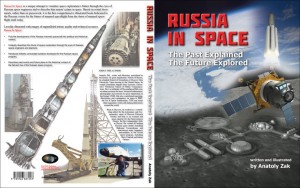
Front and back cover of “Russia in Space: The Past Explained, the Future Explored” (Credits: Anatoly Zak).
Just before the publication of his book “Russia in Space: Past Explained, Future Explored,” Space Safety Magazine had the opportunity to interview Anatoly Zak, the journalist that via the webpages of Russianspaceweb.com provides the world with unprecedented coverage of the current situation of the Russian space program.
A native of Moscow, Zak attended the School of Journalism at Moscow State University and worked as aviation and space reporter for Nezavisimaya Gazeta, the first independent daily newspaper in Russia. He was among the first reporters visiting the historical Russian space sites for the very first time. In 1993, Zak moved to the US and attended Syracuse University’s Newhouse School of Public Communications. He now contributes detailed space reporting to BBC, IEEE Spectrum, and Air & Space Smithsonian magazines.
Zak is also an artist and 3D animator and his website, Russianspaceweb.com, is a unique collection of news, historical information, photography, and interactive graphics on space exploration.
During the days following the Proton-M crash on July 2, his timely reporting was fundamental to shedding light on the root cause of the failure, long before official news agencies had caught up.
How did you become one of the few non-governmental sources covering Russian space?
I guess it was easy since nobody else was trying. I had no specific goal to do that, but I was interested in journalism, history, science, and politics since high school and the history of space exploration transcends all these fields. In Russia, I covered the US and European space and considered myself an expert in the history of the Space Shuttle program. It was only natural after my move to the US to help the Western media with the understanding of the Russian space program. Obviously, due to the complexity of the subject, language barrier, and many cultural problems, it is very difficult for any mass media organization or even trade publication in the field to cover this subject. Media were not interested but people were interested, so it was a kind of very mixed message I was getting at that time.
However, we do not see much serious coverage of space in the Western media in general, not only on the Russian side. CNN famously eliminated its space section on their web site years ago and, imagine, a country like the United States does not have a single periodical magazine dedicated to the consistent coverage of news and history of the space program!
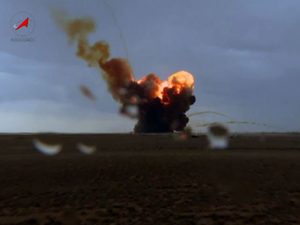
A fire shows where the Proton-M crashed at Baikonour Cosmodrome on July 1. The combustion of 600 tons of fuel may have prevented a more serious environmental catastrophe (Credits: Roscosmos/Vesti.ru).
Your coverage of the recent Proton crash has been essential to western media. Just to give an example, NPR published an update quoting only you on the DUS – this is highly unusual. While representatives from the agency, government and industry were busy attributing responsibility to others, you gave valuable information. How you managed to find those sources?
Well, I did what I could. In the US, mass media were obviously busy with George Zimmerman trial and a royal baby in England, so somebody had to do the real job. I would not go into details, also because probably those sources would be upset with me if I do. It is a combination of carefully watching everything that is going on, talking with as many people as possible and asking as many questions as possible. If you ask ten questions, one question will be answered, but if you ask one hundred questions, ten questions will be answered. I put online only a small fraction of what I know because it is simply impossible for me to digest and process all the information since I run Russianspaceweb.com alone and on small budget. Very often, I get pieces of information from various sources and the trick is to put it all together. I have few volunteer researchers, people who monitor everything for me and save a lot of time, pointing to the right direction and to the right people. It is a combination of monitoring, talking, listening, and “sewing.”
Are you “famous” in the Russian space environment? Would Russian space officials reply to your emails?
It is an easy question to answer – no. However, I do not see how it is important to have even those officials to talk. In Russia, there is a very setup culture about where to send information. They talk to those major services or semi-officials news organizations and you know in advance who they want to blame and their official positions.

Dmitry Rogozin, deputy premier of the Russian Government in charge of defense and space industry, spoke in favor of the reform just after the Proton-M crash (Credits: Ria Novosti).
The Proton crash led many high level people to push forward the Russian space industry reform. Do you think the reform is necessary? Will it fix the problems? How will the Russian space industry react?
There is no controversy about the need for reform, of course. However, reorganization and consolidation of the industry has probably more to do with the continuing readjustment of this sector to the post-Soviet era and this process has been going on for the past 20 years. These changes should probably reduce duplication and reduce inefficiency. The idea is to create just one company, which will design rockets, another company which will design manned spacecraft, etc. It has been going on for a while and essentially, what they want to do is to specialize those companies to consolidate as much as possible and to not duplicate each other.
However, I am skeptical that this reform will solve the fundamental flaws in the industry. There is a separate issue of quality control, as we saw it vividly in the Proton accident, but also Russian satellites failing in orbit and rockets not even making it to orbit. This particular issue with Proton can be probably resolved quickly. It is crazy that in the age of digital cameras and iPhones, they still do not have photographic and video documentation of all assembly procedures. Obviously, it is easy to implement and I can recommend them a few good cameras! However, there are wider and more difficult problems – motivating workers, educating good engineers, paying people adequately and establishing good quality control at all levels. Nevertheless, it is resolvable.
They should tell their employees to read RussianSpaceWeb.com to understand the historic importance of the work they are doing.
Do you see the possibility for a commercial space industry in Russia, similar to what is happening in the US, with competition and private investments?
I think you can have competition only when you can afford it. It is competition only in words. It is NASA giving taxpayers’ money to commercial industry. Without taxpayers’ money, none of them would exist. They do not invest their own resources; it is a kind of fifty-fifty situation but if you remove NASA and taxpayers’ money from this equation, all of them will collapse. In order to organize something similar in Russia, Roscosmos would have to invite two companies to build a manned spacecraft. Can we imagine doing that? No, absolutely, because Roscosmos can hardly finance one project right now. If you can afford competition, it is good, but it is affordable only in US right now, not even in Europe. I think many people would disagree with me, but Europe is a good example that when there are no taxpayers’ money, there is no competition. Europe is essentially trying to bid for the American contracts. The Orion program was the only way to save the ATV technology. It is not a bad idea, but it illustrates very well the situation. Same in Russia, although instead of none, there is one company building the manned spacecraft, RKK Energia, which is government-owned and funded by Roscosmos.
I am looking at the table of contents of your new book “Russia in Space: Past Explained, Future Explored.” It seems that everything you can imagine about the Russian space program is in the book.
You will be surprised; actually, it is not everything. It is a selection from the Russian space program’s history, how big it is and how many ideas there are. I tried to include as much as possible in order to give a wide overview of the projects. I spent last few years writing and illustrating it and it will be out this month from Apogee Books. The publisher is already selling the book in pre-order mode.
How much time did you take to write and illustrate the book?
I have worked directly on the book since 2009, until 2012. It has been almost 4 years just to do the book part. However, my artworks and my research were done through 10 to 15 years. It is a compilation of works over many years, a lifetime work and a monumental task for one person to do.
How do you see the future of the Russia space program in the next 10-20 years?
If you read articles in the ‘90s, they pretty much say that the Russian space program would have collapsed in a few years. It did not happen and it is improving now in small steps, it started going forward, so now there are more projects, more launchers and unfortunately, there are more accidents as well. However, when you do things very extensively and actively, it can happen. I would take it as a growing problem. Therefore, I see the future of the Russian space program bright, of course; otherwise I would not be in this business. There are concerns, of course! As in any other country, the space program is a product of political and economic environment. If they look back to the past as an example how to do things just because they achieved all those great things then, they might discover that those methods would not work in the modern world. This is an internal issue. Then, for the manned space flight, there is a bigger global question – where to go next and how better spend limited resources? Here much depends on the ability of all countries to cooperate and their citizens to be well educated and curious enough to support space program.
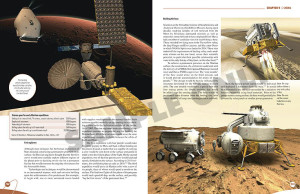
Visualizations and descriptions of the latest Russian plans for the manned expedition to Mars contained in the book “Russia in Space” (Credits: Anatoly Zak).
Moon, Mars, or asteroids? Where next?
Well, I think in this case we can kind of trust what Russian officials are saying. Probably without cooperation, projects like these are very difficult and expensive to implement. However, sometimes cooperation is also costly and difficult in political terms, because countries need to be in good relations in other areas and we all know Russian-American relations are not simple. I think that what Roscosmos is going to do will depend on two factors: first, what NASA is going to do, because they obviously look at what US does even after the Cold War, and second, how Russian-American relations are going to develop in the future. If the relations are relatively good and stable, we can see cooperation in the space arena, otherwise we can have more competition. However, the space programs will be developed roughly in parallel, although Russian space program is much smaller and Russians cannot do everything of what Americans do. Therefore, if asteroids become the main goal, Russia will probably attempt something like that or at least build relevant technology for cooperation.
So far, we have this very strange situation where technology has been already built at least in US, however, there is no exactly a scenario of what this technology is going to do. In Russia, plans have been made, but they are mainly on paper at this point. I have written a lot in the book about this new generation spacecraft, similar in capability to Orion. It can go to lunar orbit and Lagrange points. Therefore, if any of those goals will be proclaimed by international community, Russia can probably go ahead and build this spacecraft having a joint program to explore whatever it is decided to explore.
“Russia in Space: Past Explained, Future Explored” by Anatoly Zak is available in pre-order for a limited time at the Apogee Books’ website.

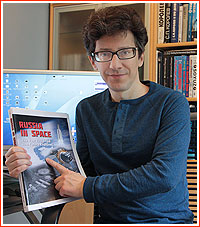
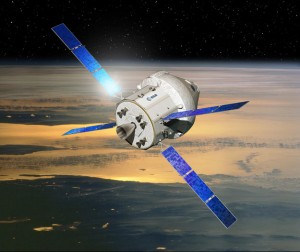





































![A trajectory analysis that used a computational fluid dynamics approach to determine the likely position and velocity histories of the foam (Credits: NASA Ref [1] p61).](http://www.spacesafetymagazine.com/wp-content/uploads/2014/05/fluid-dynamics-trajectory-analysis-50x50.jpg)



Leave a Reply